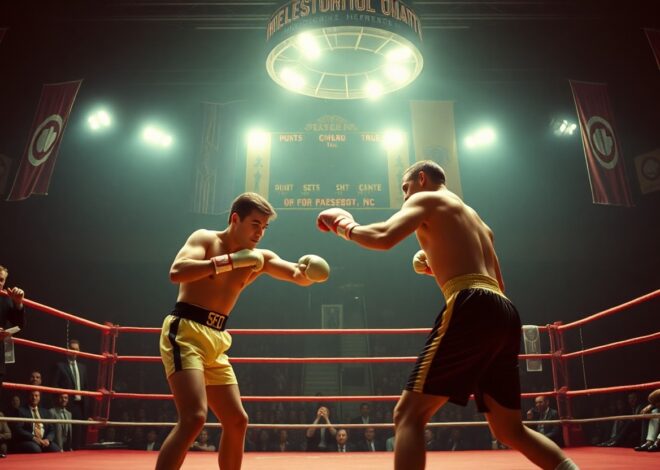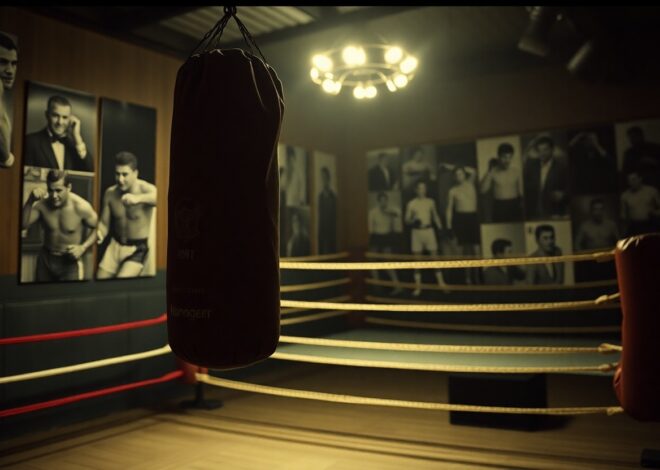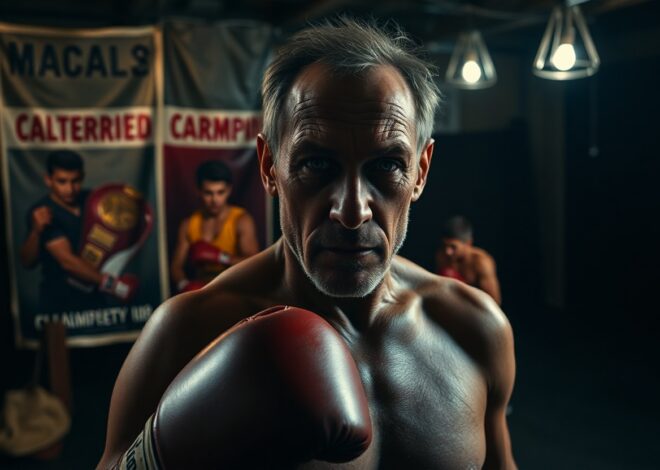Rivalries That Cemented The Status Of Boxing Legends
Legends are often forged in the heat of battle, and in boxing, few things have been as impactful as the fierce rivalries that define the sport’s history. These intense matchups between extraordinary athletes not only captivated fans but also elevated the careers of the boxers involved, leaving an indelible mark on their legacies. From the legendary clashes of Ali and Frazier to the electrifying bouts between Hagler and Hearns, each rivalry showcased the resilience and determination that boxing embodies, ultimately cementing their status as undying icons of the ring.
Types of Rivalries in Boxing
- Personal Feuds – Often fueled by animosity beyond the ring.
- Nationalistic Rivalries – Highlighting pride and honor between countries.
- Promotional Rivalries – Between boxing companies and management.
- Generational Rivalries – Pitting different eras against each other.
- Style Matchups – Contrasting fighters with differing techniques.
Assume that these rivalries play a fundamental role in the commercial and cultural ascent of boxing, shaping not just the athletes’ legacies but the sport itself.
| Type of Rivalry | Example |
| Personal Feuds | Tyson vs. Holyfield |
| Nationalistic Rivalries | Ali vs. Frazier |
| Promotional Rivalries | Mayweather vs. Pacquiao |
| Generational Rivalries | Leonard vs. Duran |
| Style Matchups | Foreman vs. Ali |
Historical Rivalries
Throughout boxing’s illustrious history, iconic rivalries have defined eras and transcended the sport itself. Fighters like Joe Frazier and Muhammad Ali ignited passions with their contrasting styles and beliefs, while bouts like the “Fight of the Century” in 1971 encapsulated the cultural zeitgeist of their time. Such storied battles not only showcased athletic prowess but also highlighted social issues, forever etching their names in boxing lore.
Contemporary Rivalries
The modern era of boxing has seen its own share of fierce rivalries that captivate global audiences. Fighters like Canelo Alvarez have found themselves at odds with contemporary stars such as Gennady Golovkin and Caleb Plant, fostering intense competition that draws significant viewership. These matchups are often marked by pre-fight theatrics and social media exchanges, amplifying the hype surrounding each bout.
Contemporary rivalries go beyond mere competition; they represent the clash of ideals, styles, and personal narratives. The buildup to bouts featuring fighters like Errol Spence Jr. and Terrence Crawford has enveloped fans in drama, as each competitor attempts to solidify their dominance in a crowded welterweight division. Each fight is not just an athletic encounter, but a chapter in the ongoing story of boxing’s evolution, appealing to both the sport’s rich history and new followers alike.
Factors Contributing to Legendary Status
- Skill and Technique
- Personalities and Storylines
- Historic Fights
- Marketability
- Impact on the Sport
The combination of these factors not only enhances a boxer’s legacy but also shapes how fans perceive the sport itself.
Skill and Technique
Boxers like Muhammad Ali and Floyd Mayweather Jr. are renowned for their exceptional skill and technique, setting them apart in a competitive landscape. Mastery of the fundamentals, combined with unique styles, has allowed them to adapt and prevail against various opponents, showcasing their in-ring prowess. The artistry involved in their movements and strategies resonates with fans, ensuring their place in boxing history.
Personalities and Storylines
The allure of boxing legends often lies in their personalities and the compelling storylines that unfold throughout their careers. Fighters like Mike Tyson captivated audiences not just with their combat skills but also with their larger-than-life personas, creating a narrative that transcended the ring. Rivalries, whether friendly or bitter, add layers to a boxer’s journey, making the fights more than mere contests.
The compelling nature of these personalities often intertwines with their life stories, creating rich tapestries that encapsulate triumph, adversity, and transformation. Fighters like Joe Frazier and Ali shared not only physical battles but emotional narratives that touched fans worldwide. Their struggles, outside circumstances, and perseverance fostered a connection that left a lasting imprint on the sport, echoing through generations.
Tips for Appreciating Boxing Rivalries
To truly appreciate the intensity of boxing rivalries, consider the following tips:
- Research the fighters’ backgrounds to understand their motivations.
- Analyze their fighting styles and how these often clash.
- Explore the historical context that influenced their rivalry.
- Watch the fights multiple times, focusing on different aspects each viewing.
- Engage with fan communities for diverse perspectives.
After exploring into these elements, you’ll gain a richer appreciation of what makes these rivalries iconic.
Understanding the Context
Each boxing rivalry is steeped in situational factors that enrich the narrative. Key events leading up to the bouts, such as previous fights, personal animosities, or national pride, contribute layers of meaning. For instance, the rivalry between Ali and Foreman was not only a clash of styles but also a battle of contrasting personas in a politically charged era.
Observing Key Moments
Significant events in a rivalry often define its legacy. Analyzing these moments—such as stunning knockouts, dramatic comebacks, or controversial decisions—provides insight into the fighters’ mentalities and skill sets. Take, for example, the epic showdown between Tyson and Holyfield, which featured the infamous ear-biting incident, forever altering perceptions of both fighters.
Focusing on these pivotal instances helps fans contextualize the emotional stakes of a fight. In Tyson versus Holyfield, the tension shifted dramatically at the moment Holyfield absorbed a relentless barrage, showcasing resilience not just physically but psychologically. An invitation to scrutinize the aftermath reveals how their rivalry exemplified the sport’s unpredictability and the fighters’ journey from villains to legends.
Pros and Cons of Boxing Rivalries
| Pros | Cons |
|---|---|
| Generates significant public interest | Can lead to unsportsmanlike behavior |
| Increases ticket sales and viewership | Might overshadow other deserving fighters |
| Enhances fighter profiles and legacies | Risk of promoting violence over sportsmanship |
| Encourages fighters to elevate their performance | Could perpetuate unhealthy rivalries |
| Attracts sponsorship and media coverage | Taxing emotional stress on fighters |
Benefits to the Sport
Boxing rivalries foster an exhilarating atmosphere that draws in fans and media alike. The anticipation of a highly publicized match can elevate a fighter’s profile worldwide, leading to increased ticket sales and sponsorship opportunities. Furthermore, these rivalries often ignite fierce competition, pushing athletes to perform at their absolute best, ultimately enhancing the quality and excitement of the matches. This dynamic not only captivates audiences but also solidifies the sport’s place in popular culture.
Potential Drawbacks
While rivalries can boost the sport’s visibility, they also pose challenges that warrant attention. The fierce nature of personal feuds may lead to unsportsmanlike conduct and compromise the integrity of the sport, sometimes overshadowing the achievements and talents of other boxers. Such intense rivalries can devolve into detrimental behavior that promotes aggression rather than respect.
Moreover, the elevation of certain rivalries often marginalizes other fighters who deserve recognition, diminishing their chances for growth in the sport. The constant media spotlight can exacerbate personal issues for fighters, pushing them towards a mentality of hostility rather than sportsmanship. The pressure to uphold a particular narrative can lead to mental strains and a focus on aggression over technique, undermining the essence of boxing as a sport. Balancing the excitement of rivalries with the need for respect and professionalism remains a critical challenge within the boxing community.
Step-by-Step Guide to Analyzing a Rivalry
| Step | Description |
| 1. Research Backgrounds | Investigate the fighters’ histories, motivations, and career trajectories. |
| 2. Examine Fight Dynamics | Analyze styles, techniques, and outcomes of the encounters. |
Researching Fighters’ Backgrounds
Understanding a fighter’s background provides context for their rivalry. Explore factors such as their training, amateur records, personal stories, and significant life events that shaped their boxing careers. Notable rivalries, like that between Muhammad Ali and Joe Frazier, were influenced by cultural, social, and personal issues that went beyond the ring. These elements contribute to the *intensity* and *emotional stakes* of their encounters.
Examining Fight Dynamics
Fight dynamics refer to the specific styles and techniques utilized by the boxers during their matchups. Each fighter’s approach, including offense and defense strategies, can significantly affect the results. For instance, when analyzing the bouts between Juan Manuel Márquez and Manny Pacquiao, one must consider Márquez’s counter-punching prowess versus Pacquiao’s explosive speed and volume. These contrasting styles not only dictate in-ring performance but also capture the essence of their rivalry.
When examining fight dynamics, focus on elements such as *punch accuracy*, *footwork*, and *tactical adaptations*. For example, during their fourth encounter, Márquez successfully adjusted to Pacquiao’s aggressiveness by maintaining distance and employing calculated combinations. Analyze the execution of game plans, moments of *strategic shifts*, and the psychological warfare present in exchanges. Each bout presents a unique narrative, shedding light on both fighters’ *mental and physical fortitude* under pressure.
Impact of Rivalries on Boxing Legacy
Rivalries shape the very fabric of a boxer’s legacy, often defining their career trajectory and public perception. Iconic clashes, like those between Muhammad Ali and Joe Frazier, elevate fighters to legendary status, solidifying their achievements in the minds of fans. These confrontations not only showcase extraordinary athleticism but also create narratives that echo through the ages, significantly enhancing the legends of those involved.
Influence on Future Generations
The fierce rivalries in boxing inspire aspiring athletes, instilling a sense of purpose and ambition. Future generations learn not just techniques but also sportsmanship, determination, and the importance of legacy, as they look up to the intense battles and dramatic narratives that shaped past icons.
Cultural Significance
Boxing rivalries extend beyond the ring, often serving as symbols of cultural and social movements. For instance, the rivalry between Sugar Ray Leonard and Roberto Duran mirrored the clash between American and Latin American identities in the 1980s, while Muhammad Ali’s battles were intertwined with civil rights, resonating deeply within societal contexts. These fights galvanize communities and foster narratives that reflect the struggles and triumphs of various demographics.
Moreover, rivalries can transcend sports, becoming integral to *cultural dialogues* and prominent in popular culture. The intense clash between Oscar De La Hoya and Floyd Mayweather significantly impacted Latino pride and the African American experience in sports. Documentaries, films, and even music have captured these rivalries, underlining their role in shaping not only the boxing industry but also broader societal values. Whether it’s a local hero or an international superstar, these legendary rivalries encapsulate emotions, foster unity among fans, and often fuel significant cultural discourse.
To wrap up
To wrap up, the rivalries that shaped boxing legends are not merely footnotes in the sport’s history; they are defining moments that elevated athletes to iconic status. These fierce competitions often showcased extraordinary skill, resilience, and the personal stakes involved, captivating fans worldwide and creating narratives that persist through generations. Whether it was Ali vs. Frazier or Tyson vs. Holyfield, each rivalry contributed to boxing’s rich tapestry, highlighting the sport’s inherent drama and the remarkable journeys of its champions. Ultimately, these rivalries solidified their legacies and continue to inspire future boxers and enthusiasts alike.
FAQ
Q: What was the impact of the rivalry between Muhammad Ali and Joe Frazier?
A: The rivalry between Muhammad Ali and Joe Frazier highlighted the contrasting styles and personalities of both fighters. Their three epic bouts, particularly the “Fight of the Century” in 1971, brought unprecedented attention to boxing, showcasing the sport’s drama and intensity. This rivalry not only solidified their legacies but also appealed to a generation grappling with social and political issues, making them cultural icons.
Q: How did the rivalry between Mike Tyson and Evander Holyfield shape their careers?
A: The rivalry between Mike Tyson and Evander Holyfield was marked by two legendary encounters, with Holyfield winning both matches. Their clashes transformed Holyfield into a symbol of resilience and strategy, while Tyson’s decline in the ring was exacerbated by these defeats. This rivalry is remembered for its dramatic moments, including Tyson’s infamous disqualification for biting Holyfield’s ear in their second fight, leaving a lasting impact on the sport’s narrative.
Q: In what ways did Oscar De La Hoya and Fernando Vargas’s feud influence boxing in the late 1990s?
A: Oscar De La Hoya and Fernando Vargas’s rivalry in the late 1990s was characterized by their contrasting backgrounds and fighting philosophies, leading to a highly publicized bout in 2002. This rivalry attracted significant fan interest, elevating the profile of both fighters and bringing Latino boxing to the forefront. Their clash showcased the growing market for boxing, emphasizing the importance of personal rivalries in the sport’s appeal.



